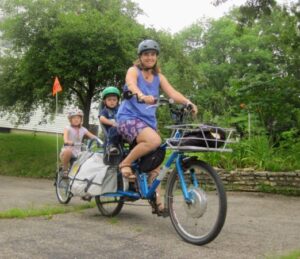By Anne Overcash, M.Ed.
“Help! My child only likes to play with blocks and nothing else!”
“This person has very limited interests.”
“Free time is the most difficult time of day.”

For example, a learner spends a vast amount of time organizing their pocket watch collection. We bring in more pocket watches or pocket watch themed items and have these options available during downtime. Their interest deepens, and we bring in even more related items. It becomes a cycle. This cycle may be comfortable for everyone. However, it can be devastating if the learner loses interest completely and we have nothing to fill the void.
To avoid this scenario, let’s resolve to introduce a range of new experiences and broaden leisure choices for our learners. We never know when the next thing they try will develop into a fun and fulfilling pastime!
Here are some ways to identify, expand, and magnify recreation activities:
Invitation to play
In school, students are systematically and regularly introduced to a range of activities including sports, music, musical instruments, wood working, crafts, art techniques, and the list goes on. Later, clubs can offer even more variety. Through these experiences, some students develop life-long interests. Sound familiar? Do you know someone who plays adult league sports, competes in chess tournaments, or are avid photographers/videographers? This might even be you! So, how can we introduce new activities to our learners?
“We’ve tried everything, and yet pocket watches continue to be their most favorite pastime.” It’s entirely possible that pocket watches will be a lifelong passion and pursuit. Don’t be discouraged, expansion of interests can be a process. Continue to present new activities. Consider card games, magic tricks, board games (sounds like family game night!) as well as outdoor activities and sporting endeavors. Focus on both solitary and group activities such as running, knitting, embroidery or other crafts, dance, group exercise classes, basketball, etc. The size of the group might also be important. A group of two for a leisure activity can be quite nice and may be preferred over a larger group!
Our interests develop and shift over time. Expect this will happen as you introduce new experiences regularly. These shifts add novelty and interest to our lives. As the saying goes: variety is the spice of life! Enjoy this journey and who knows maybe some of these new activities will become passions of yours as well. Looking for some inspiration? Our Support at Home page has over 30 fun activities to try with your learners and includes how-to videos, lesson plans, and Pics for PECS® picture grids for PECS® Users!
I saw it on TikTok (or I heard it through the grapevine)

Media sensations may present an opportunity. Sometimes the thing that becomes the internet sensation has nothing to do with the televised event – except that it was caught on video and just like that a new sensation. If I say ‘knitting and the Olympics‘ and you know exactly what I mean, that is a case in point! How many knitters do you know as a direct result of this? Check out TikTok/YouTube/Instagram content that your child or students are watching. This may shine a light on the next invitation to play.
This generation to the next
Do you have a favorite pastime that your parents or grandparents also enjoyed? Perhaps they enjoyed gardening/horticulture/birding, raced remote control cars. Maybe it was cooking, fishing, bowling, or quilting they loved most. Many families enjoy putting 1000+ piece puzzles together, and this is something they remember from countless family gatherings. Share your favorite pastimes with your own children and students.
Something completely different

May these strategies jumpstart or energize your quest to identify, expand, and magnify interests for your children and students. There is an excellent chance that some of these activities will stick and become lifelong pastimes that are an amazing part of a fulfilling and happy adult life.
Join our upcoming talk at the Pyramid FUNctional Behavior Conference 2022: “Stickers to Paychecks: Transitioning to Adulthood” presented by Anne Overcash, M.Ed., Tony Castrogiovanni, PhD, Donna Banzhof, M.Ed., BCBA, and Keiko Suzuki, M.Ed., BCBA. Utilizing elements of The Pyramid Approach, a framework for effective learning environments, we will explore challenges with transitioning from adolescence to adulthood specifically related to vocational and leisure skills. Using examples, the audience will be guided to discover questions to ask and strategies to use for effective and expanded opportunities.
For more information and helpful strategies:
- Post a comment or question on our Facebook group: PECS User Support
- Join us at Pyramid’s FUNctional Behavior Conference 2022 on April 4th & 5th
- Attend a Pyramid Approach to Education Training
- Schedule time with a consultant via remote consulting sessions
- Contact us directly via email: pyramidus@pecs.com
© Pyramid Educational Consultants, LLC. 2022
